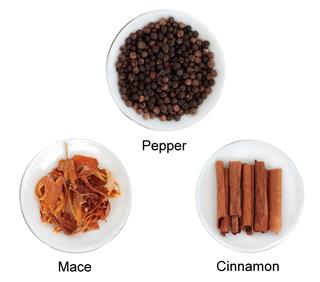
At times, the need to opt for a galangal substitute may arise, given the fact that it is not available in abundance. This article cites in brief the different substitutes and also more information related to it.
Galangal is also referred to as galanga, and has a few medicinal and culinary uses associated with it. It is delicious to taste, and hence, forms a part of many recipes. It can also be used in the powdered form. But since it grows only in limited parts of the globe, its availability becomes a problem in the areas where it is not grown. In such cases, it becomes necessary to search for a substitute. You can read below to know more about the potential substitutes.
Of the whole plant of galangal, only the root is edible and used for cooking purposes. It forms the main part of most of the Thai food. In a few places in Asia, it is available in the frozen form. In some places, it is also sold in powdered and dried form.
This plant belongs to the genus Alpinia. The plant has a horizontal stem and shoots above roots below. Hence, it is a rhizome. It grows well in warm to temperate regions. These plants are mainly found in the Eastern parts of Asia. The leaves of this plant and large and dark green in color. The flower is similar to that of the irises. Since it tends to spread a lot, enough space should be left around it while being planted. If you want to plant them, make sure that the soil where it is going to be planted is moist and drained well.
Galangal herb has many medicinal properties. It is used for healing different infections caused due to fungi. Also, it helps in alleviating pain in the joints and muscles. It is also used for the treatment of nausea, rheumatism, flatulence, and catarrh. People suffering from digestive tract problems and those who are pregnant should avoid this herb as it might tend to develop a few side effects. Its antibacterial and tonic properties make it a good homeopathic and also a veterinary medicine.
There are not many substitutes available for galangal. The most often used substitute is ginger root. This is because, to a large extent, ginger root tastes like galangal. The reason being that both belong to the same family of ginger. Also, both share many common properties. Both have similar appearances too.
Other food items that can be used as a substitute are cinnamon, mace, and pepper. But, you will have to supplement it with other food items or use them in combination. You may have to use cinnamon and mace together to get that perfect taste.
So, in future, if you do not have galangal and you need to use it in your recipe, then you can opt for substitutes. It is also important to note that the use of substitutes may change the taste of your recipe, but if you have not other option but to use them, the ones above will be your best bet.


























